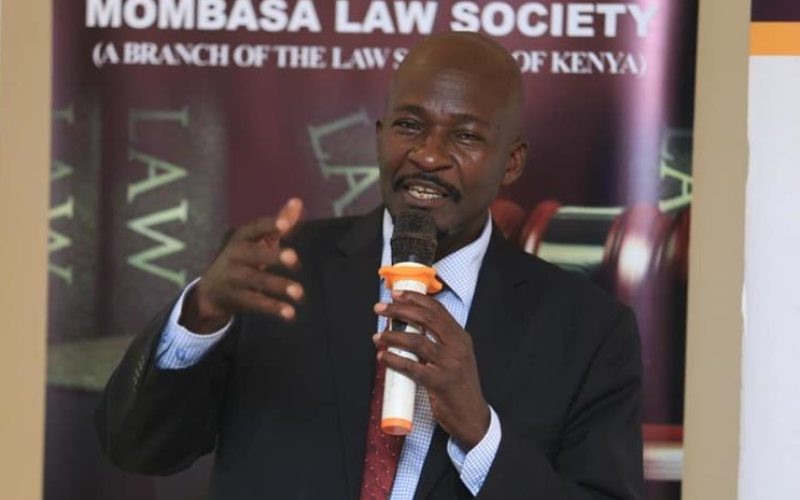How things have changed. In the ‘old days’ up until 2007, the route to the presidency had two obvious requirements: many votes in the ballot box and a lot of money in the bank. Another bonus advantage was having powerful networks in your pocket, but of course being an incumbent was the most premium advantage. But now, there is a new arena for electoral victory: the courtroom. The Supreme Court, to be more specific.
When Raila Odinga lost the 2007 elections, he was certain that he had lost unfairly. But he could not even dream of taking a petition to the Supreme Court. And this was for good reason. The Chief Justice at the time was Evans Gicheru.
As President, Mwai Kibaki had personally appointed Gicheru just four years earlier. Now this was the same Kibaki that Raila was expected to take to Gicheru’s court. Only a fool would think it prudent.
Fast forward to the golden age of an ‘independent Judiciary’ where the President cannot just pick and choose the Supreme CourtChief Justice as he or she pleases.
The Supreme Court is once again a viable avenue for the reclamation of ‘stolen’ electoral victory. But, if we are to see things realistically, the same Supreme Court can also be the avenue for the ‘creation’ of an electoral victory. Here is why.
All factors remaining constant, the next elections will be held on Tuesday, August 9, 2022. It is almost guaranteed that between the day the election results are announced and the deadline for filing a petition, which will fall on the on August 24, there will be petitions contesting the presidential electoral results.
The constitutional timeline for the Supreme Court to give a ruling is two weeks after the deadline of the date of petition. So, on September 7 the Supreme Court will either rule the election valid or it may nullify the results. If the Court rules that the results are valid, the president elect will be sworn in on September 14.
For anyone intending to run for presidency, the events that lead to Election Day, on August 9, 2022 are very important.
But there are some candidates that believe in the unscrupulous saying: ‘Why hire a lawyer when you can buy a judge?’ For these presidential candidates, the events that happen between August 24, 2022 (when they will file a petition), and September 14, 2022 (when the ruling will be made) are by far more important.
For these candidates who see the Supreme Court as an arena for electoral victory, the next two and a half years will be all about the realignment of the Judiciary.
The ‘Separation of Powers’ made famous by the French philosopher Montesquieu, envisioned a judiciary separate from the executive and legislature. Our Constitution 2010 has delivered this to us. But there is now the danger of a new Kenyan convolution of Montesquieu’s philosophy. This is the ‘Unification of Powers’ between the Judiciary and the Political Class.
It is politically logical that any shrewd presidential candidate will attempt to create an ally out of the Judiciary. It is also politically logical that they will attempt this ‘Unification of Power’ by all means possible- from creating loyalty through reward or punishment, threats or favours, blackmail or charm. So long as the end goal is to have the Judiciary on their side.
But to them, the most logical and certain route to electoral victory in the courthouse is to take anticipatory action. They will do this by attempting to influence the composition of the Supreme Court Bench.
And this is why we should examine all news, drama and shakeups at the Supreme Court with a critical eye. Could the ‘Unification of Powers’ explain recent events?
- The writer is a PhD candidate in political economy at SMC University. [email protected]
Stay informed. Subscribe to our newsletter
 The Standard Group Plc is a
multi-media organization with investments in media platforms spanning newspaper
print operations, television, radio broadcasting, digital and online services. The
Standard Group is recognized as a leading multi-media house in Kenya with a key
influence in matters of national and international interest.
The Standard Group Plc is a
multi-media organization with investments in media platforms spanning newspaper
print operations, television, radio broadcasting, digital and online services. The
Standard Group is recognized as a leading multi-media house in Kenya with a key
influence in matters of national and international interest.
 The Standard Group Plc is a
multi-media organization with investments in media platforms spanning newspaper
print operations, television, radio broadcasting, digital and online services. The
Standard Group is recognized as a leading multi-media house in Kenya with a key
influence in matters of national and international interest.
The Standard Group Plc is a
multi-media organization with investments in media platforms spanning newspaper
print operations, television, radio broadcasting, digital and online services. The
Standard Group is recognized as a leading multi-media house in Kenya with a key
influence in matters of national and international interest.








